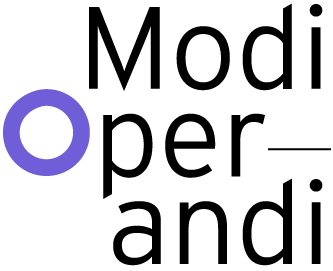BODY: FOLDED SILHOUETTE OR DIVIDED SHADOW
The lingering questions that become apparent in this discussion are, in fact, tangible ones: how are the ‘others’ actually situated in architecture? How are their physical characteristics manifested in the spatial configurations of architectural constructs? If the human body is implicitly present in architectural projects, then what exactly would or could constitute this bodily presence? In other words, how are the ‘others’ simply re-presented? As stated, the tendency to open the discourse to a multitude of others introduces a ‘new’ set of possibilities and virtual movements in space.[21] The ‘others’ have become diversified entities to such an extent that the dialogue with them suffers increasingly from a lack of clear definition. To solve this issue, they can only be represented as vague physical beings. They start to resemble silhouettes or spectres, bodily entities whose characteristics are never precise, never distinct, and which never form a clearly defined physical manifestation of a personality. Hence we are not dealing with disembodied entities,[22] but ones that consist of such a multiplicity of non-related characteristics, each one becomes a ‘Körper ohne Eigenschaften’: a body without qualities.
Within the context of the discussion that sees all architecture as inevitably dealing with the space of the prison, this ‘silhouette’ is reminiscent of the prisoners who are on display as objects in a panoptic machine. Yet there is a fundamental difference, since in this case the prisoner incorporates an additional number of other ‘characteristics’. The prisoner is no longer objectified, classified and numbered as s/he is in the Panopticon, but becomes a being who is additionally depersonalised upon entering the grandiose structure of architecture. I would argue that this is the reason why Piranesi’s Carceri have remained so excruciatingly fascinating to this day: the architecture that was apparently made to impress and suppress actually offers, or inclines towards, a space of absolute freedom ¬– however false that hope of freedom might be. This is a freedom that equals the opportunity to wander eternally in the ruins of a divine past, while surpassing it because of the apparent absence of any rule.
A similar attempt at spatial freedom can be observed in the enlarged city of New Babylon,[23] where Constant projected an extended urban landscape in which the individual is both lost and subjected. Some structures that Constant proposed still use an architecture that is full of subordination. In others, the homo ludens would be able to find freedom in an all-encompassing structure that is ‘ladder’-labyrinthine (some of these are even mobile!), and through which only vague silhouettes appear to move. It seems only proper that architecture casts shadows. Inside this structure, and under the spell of these shadows, one can perhaps find a deeper understanding of the other side of order and subordination. The notion of architecture as a form of protection recedes when one realises that the real possibility of danger lies inside the house, inside architecture. The shadow cast by architectural structures is, then, not so much a threat of subordination but actually an unfulfilled promise. This is a more meaningful interpretation of poiesis: the ability to extend beyond the borders of articulated thinking, confirmed spatial order and expected behaviour. The vagueness and desperation embedded in the shadow actually constitute the profound mystery of architecture.
This is the ontological void from which and towards which architecture operates. After the demise of the Pantakrator, usually understood as the ‘ruler of all’, but also represented as the one who oversees all, as in the Panopticon, and after His replacement by the naked Modern man, an individual to whom specific characteristics could be attributed, the inhabitant of today’s architecture is a silhouette who certainly has basic human characteristics, but who remains as vague as a shadow.[24] As Geert Bekaert stated, architecture is indeed ‘… not innocent, not harmless, (…) its fundamental task is to break down reality, and, by means of an adventurous, uncertain reconnaissance, to grant that reality new opportunities’.[25] The body of the prisoner, the tissue of the city and the contours of the silhouette all equally need to be coded, represented, transformed, and decoded. These entities firstly need to be textualised, i.e. made linguistic and/or discursive, then contextualised. When they start to be folded into a structure, an architectural statement will emerge where the body is simultaneously located in the text and in space. The map that can be drawn from this is a registration of the body inscribed into the city as well as into architecture. In an endless cycle of drawing and withdrawing, a dance of mirroring, the full and the empty are situated side by side. So, in the end, while at the end, are we then chasing ghosts? And, if we have been drawn near, then to what surface?
Free PDF: Ghosts in the Cell: Marc Schoonderbeek
